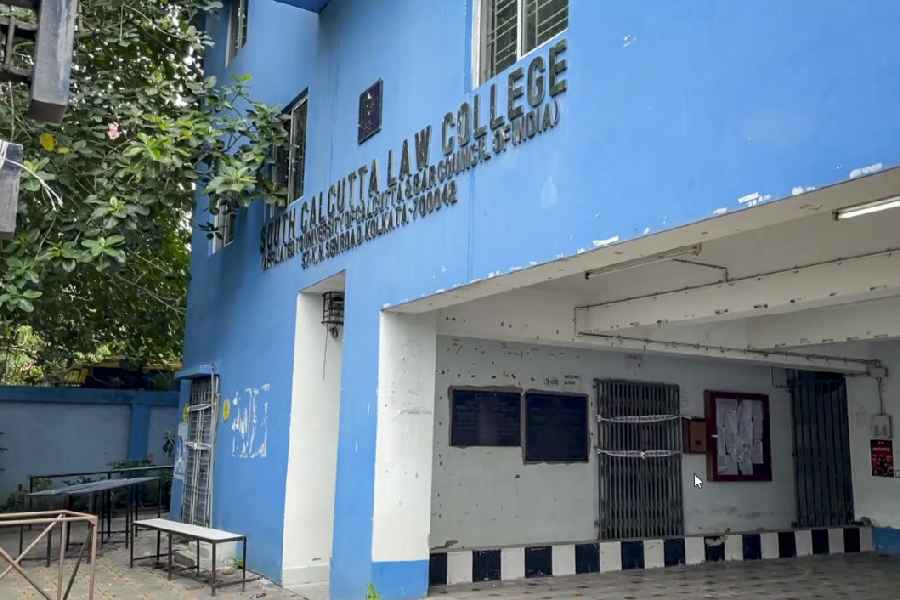The centrality of rivers in civilisational histories has often granted them a sorcerer’s role — with powers of nurturance, resuscitation as well as destruction. In the case of Hooghly, the river nourished, over time, villages, janapadas, kasbahs, and the megacities of the future. But the river needed taming, for embarkment and disembarkment in maritime trade and settling along the fertile levees, resulting in liminal, material interstices of ‘ghats’ between land and water. These were silted steps leading down to the river serving as vernacular forms of engagement with the riparian settlements.
The history of Calcutta’s ghats has been a montage of histories celebrating reform. With a plethora of insurgent possibilities, the ghats have historically unfolded a saga of societal reform in a myriad forms as the waters redeemed sins, souls, and stasis by embracing radical beliefs, syncretic traditions, dissident practices, moral revisions, and historic condonations.
The aftermath of the Great Famine of Bengal in 1770 took a heavy toll on the lives of the settlers on the lower Gangetic plains, compelling many like Haji Muhammad Mohsin, a wealthy salt merchant, to open up langarkhanas and start charitable ventures through zakat (almsgiving) in Chinsurah. The Mohsin Endowment Fund played a pioneering role in constructing the present-day Hooghly Imambara and Mohsin College near the Hooghly Ghat, paving educational and other reforms for the Muslim community. Besides, ghats served as everyday spaces of quotidian usage — for bathing, washing, sourcing water, and offering services to the city’s dead. On Calcutta’s north, Satidaha Ghat in Baranagar commemorates one of the evilest social customs of all times. Shamshans or burning ghats were sites for performing last rites, grief, mourning and epic sacrifices like satidaha. This harrowing custom was revoked later by the Bengal Sati Regulation of 1829, upon the relentless efforts of social reformists like Raja Ram Mohan Roy, Lord William Bentinck, William Carey, Joshua Marshman and William Ward. Interestingly, the reform was borne out of these ghats as they became diagnostic sites of sati censuses, suasions to widows, and formation of watch groups before the legal ban was imposed.
Soon after, a little downstream in Central Calcutta, the ghats witnessed another fascinating communal amendment in 1838. After the death of Janbazar’s wealthy zamindar, Babu Raj Chandra Das, Rani Rashmoni built Babughat in memory of her husband — a riveting, bold statement from the Shudra widow in a population divided by caste fault lines. While the British carried on their profit ventures, levying taxes on poor fishermen from Kaibarta castes, dinghies ferrying the river, and on riverside estates, Rashmoni dissented by securing private property rights over the riverine land between Ghusuri to Metiabruz. Such exercises of riverine land collation by a lower caste woman resulted in the founding of the Dakshineshwar Kali temple and the building and renovation of Ahiritola, Nimtala Ghat, allowing ghats to function as city commons for the poor, lower castes, and women. From the lens of municipal reforms, Nimtala acted as a sanitation sink for the colonial city, while many others served as outlet points of sewerage conduits and water-supply pumping stations. In the wake of Curzon’s Partition of Bengal in 1905, Tagore called for celebrating Rakhi Utsav amongst Hindus and Muslims. A procession rallied through Calcutta’s alleys, tying the sacred thread as a symbol of unity after a holy dip at the ghats of Hooghly, asserting an iconic statement of swadeshi resistance.
These land-water junctures have thus been levellers to social hierarchies and whistleblowers of a silent movement of commoning by the public to lay claim to their city. In the era of mega riverfront projects, their relevance further deepens as pioneering sites of reform that promise to protect riverine ecological spaces from the clutches of capitalistic enclosures.
Raina Ghosh is an ICSSR Doctoral Fellow at the Centre for the Study of Regional Development, Jawaharlal Nehru University










